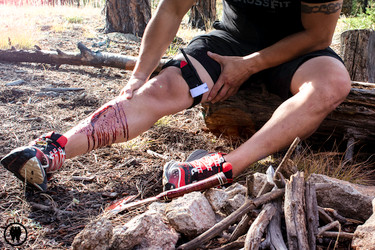Don't Be a Slacker
Posted by Ross Francis on Apr 5th 2017
Don't Be a Slacker- Tighten That Tourniquet
If you're reading this, you probably understand the importance of tourniquets and their role in saving thousands of lives. Hopefully, you even carry one (or even better, two) on your person at all times. But do you have a dedicated training tourniquet, and are you practicing with it?
I've taught a few different courses over the years, and noticed that students tend to form certain habits while training- not all of them helpful. One important training scar that I'd like to address is that folks tend not to pull the tourniquet strap tightly enough. Leaving any slack can result in the tourniquet loosening over time, and not being as effective as it needs to be in stopping blood flow to the injured extremity. Even non-elastic materials have some stretch to them, especially when put under tension for an extended period of time. It's therefore important to remember that when you're applying any type of non-elastic tourniquet, you need to pull the strap as snug as possible FIRST before the tightening device (windlass, ratchet, etc.) is engaged.
I challenge all of you to try this for yourselves! First, we're going to do it the wrong way. Take your training tourniquet, apply it to a limb and pull the strap until it's barely snug. Next, engage the windlass. You'll find it takes awhile before the tourniquet really gets tight enough to stop the pulse of the "injured" arm or leg to which it's been applied. You may also notice the material under the windlass has started to bunch up, making tightening even more difficult and time-consuming. If this were a real patient, you might see them turn even whiter and pass out from blood loss. Obviously, this isn't going to work out well for either one of you.
Now let's start over. Apply the tourniquet again- however, this time pull the strap as snug as you can get it and make sure it stays that way. Once done, use the tightening device. You'll find that with fairly minimal effort the tourniquet quickly becomes uncomfortably tight (that's a good thing!) and the pulse of the hand or foot below that tourniquet has stopped rather quickly. The goal of self-administration is application under 30 seconds, but with proper technique and practice, you can easily get it down to under 20. Every moment counts!
As with any skill, it takes proper technique and plenty of repetition to master. Train hard, train smart, and stay safe!

